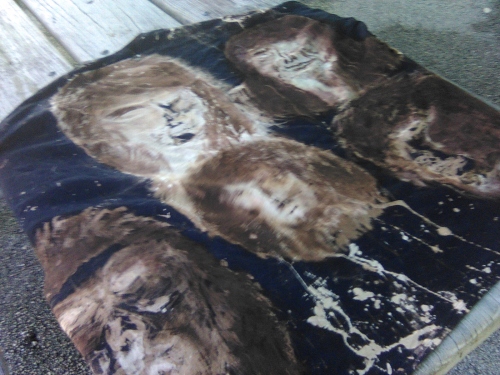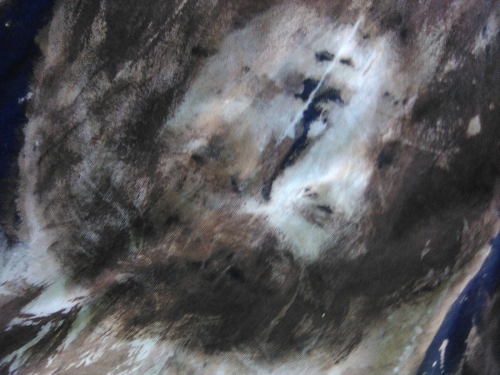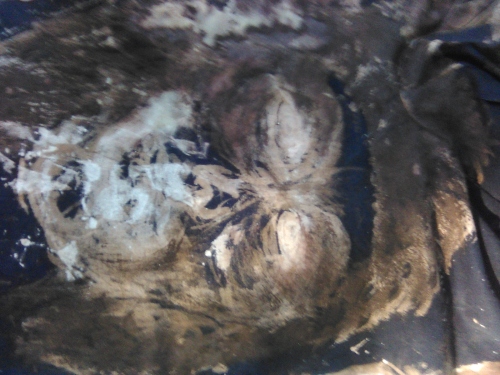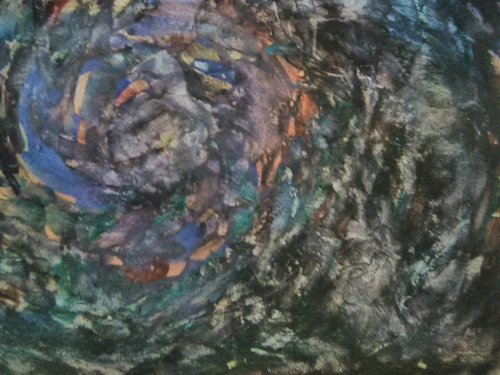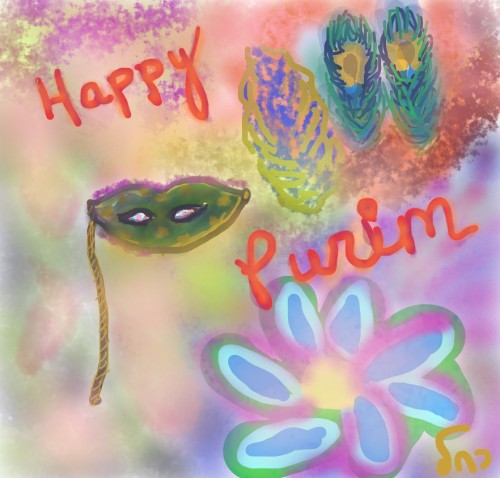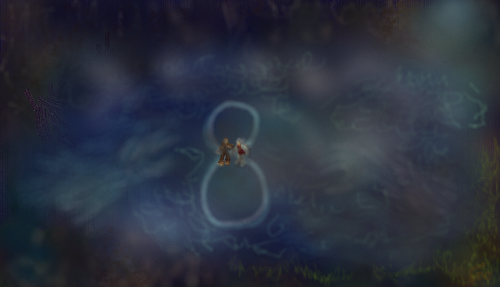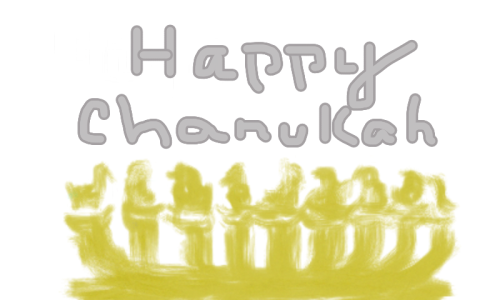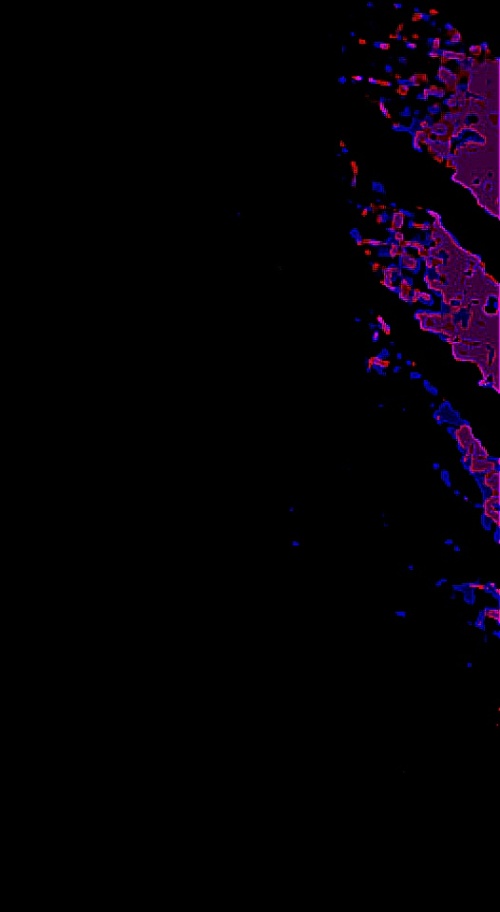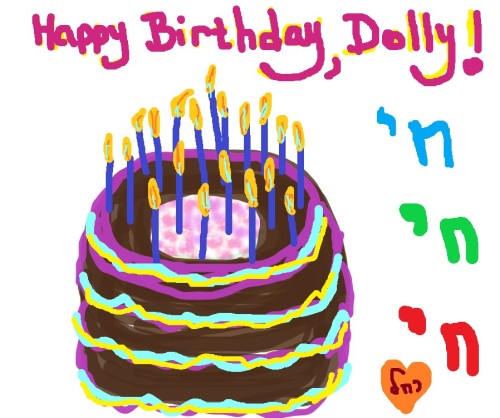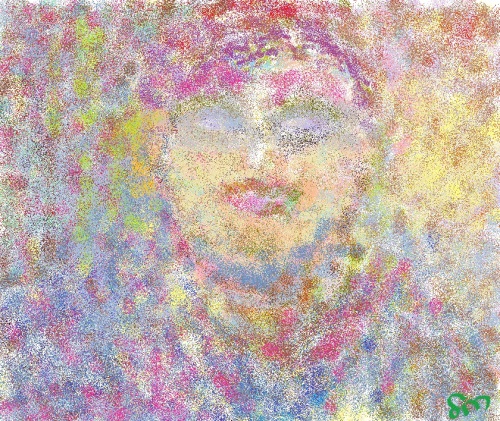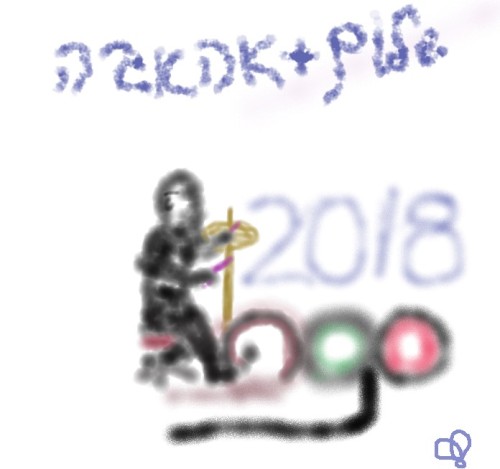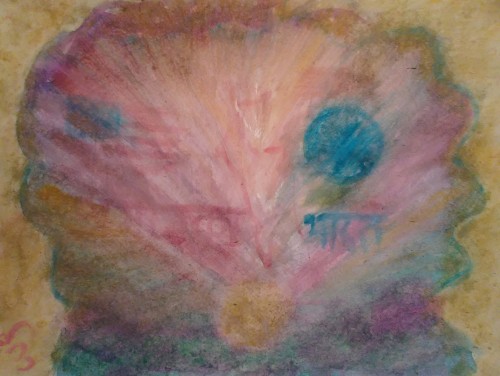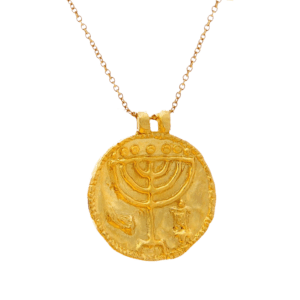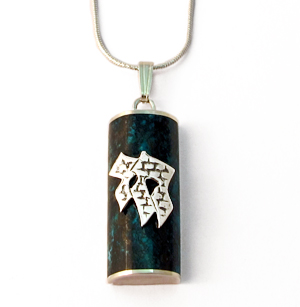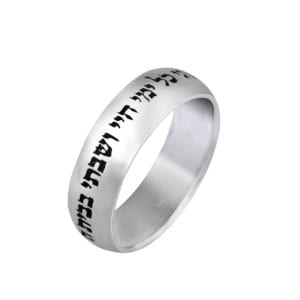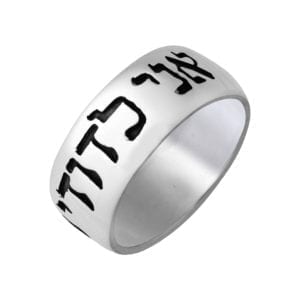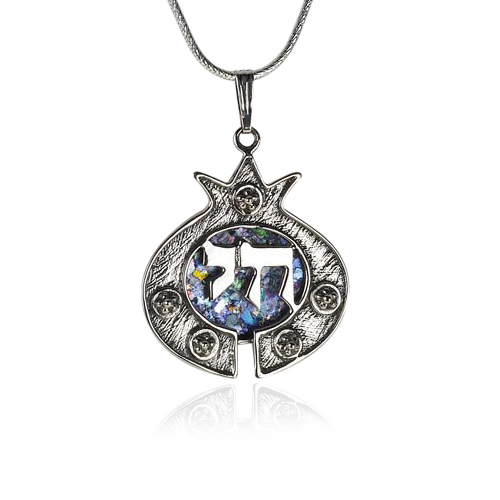Saint Catherine’s Monastery – Sinai (Randyjw; April 19, 2017)
There is a document, known as the Achtiname of Muhammad (spelled variantly as “Ashtiname”), delineating a written treaty, of sorts, between the monks at St. Catherine’s monastery in the Sinai, formally known as the “Sacred Monastery of the God-Trodden Mount Sinai”, and the founder of Islam, Muhammad, which is stated to exist in its original form, someplace, within the Topkapi Palace in Turkey, in what was previously called Constantinople — named after the Byzantine leader, Constantine, who had moved the seat of Orthodox Eastern Christianity to this location — which later was replaced with its Muslim incarnation, Istanbul. Only copies are presently available of the document, given certification by various Islamic scholars, from which we can draw inferences regarding the encounter of Christianity to Islam in the early seventh century, when Muhammad was said to have either given or sent this letter to the religious order at the mountain retreat (1).
A Wikipedia.org entry on the Achtiname of Muhammad, edited presently by Harryson56, cites a 1902 Board of Council, New York reference to the English translation made by Anton F. Haddad of the Achtiname of Muhammad, which reads:
“This is a letter which was issued by Mohammed, Ibn Abdullah, the Messenger, the Prophet, the Faithful, who is sent to all the people as a trust on the part of God to all His creatures, that they may have no plea against God hereafter. Verily God is Omnipotent, the Wise. This letter is directed to the embracers of Islam, as a covenant given to the followers of Jesus the Nazarene in the East and West, the far and near, the Arabs and foreigners, the known and the unknown. This letter contains the oath given unto them, and he who disobeys that which is therein will be considered a disbeliever and a transgressor to that whereunto he is commanded. He will be regarded as one who has corrupted the oath of God, disbelieved His Testament, rejected His Authority, despised His Religion, and made himself deserving of His Curse, whether he is a Sultan or any other believer of Islam. Whenever Christian monks, devotees and pilgrims gather together, whether in a mountain or valley, or den, or frequented place, or plain, or church, or in houses of worship, verily we are [at the] back of them and shall protect them, and their properties and their morals, by Myself, by My Friends and by My Assistants, for they are of My Subjects and under My Protection. I shall exempt them from that which may disturb them; of the burdens which are paid by others as an oath of allegiance. They must not give anything of their income but that which pleases them—they must not be offended, or disturbed, or coerced or compelled. Their judges should not be changed or prevented from accomplishing their offices, nor the monks disturbed in exercising their religious order, or the people of seclusion be stopped from dwelling in their cells. No one is allowed to plunder these Christians, or destroy or spoil any of their churches, or houses of worship, or take any of the things contained within these houses and bring it to the houses of Islam. And he who takes away anything therefrom, will be one who has corrupted the oath of God, and, in truth, disobeyed His Messenger. Jizya should not be put upon their judges, monks, and those whose occupation is the worship of God; nor is any other thing to be taken from them, whether it be a fine, a tax or any unjust right. Verily I shall keep their compact, wherever they may be, in the sea or on the land, in the East or West, in the North or South, for they are under My Protection and the testament of My Safety, against all things which they abhor. No taxes or tithes should be received from those who devote themselves to the worship of God in the mountains, or from those who cultivate the Holy Lands. No one has the right to interfere with their affairs, or bring any action against them. Verily this is for aught else and not for them; rather, in the seasons of crops, they should be given a Kadah for each Ardab of wheat (about five bushels and a half) as provision for them, and no one has the right to say to them ‘this is too much’, or ask them to pay any tax. As to those who possess properties, the wealthy and merchants, the poll-tax to be taken from them must not exceed twelve drachmas a head per year (i.e. about 200 modern day US dollars). They shall not be imposed upon by anyone to undertake a journey, or to be forced to go to wars or to carry arms; for the Muslims have to fight for them. Do no dispute or argue with them, but deal according to the verse recorded in the Quran, to wit: ‘Do not dispute or argue with the People of the Book but in that which is best’ [29:46]. Thus they will live favored and protected from everything which may offend them by the Callers to religion (Islam), wherever they may be and in any place they may dwell. Should any Christian woman be married to a Muslim, such marriage must not take place except after her consent, and she must not be prevented from going to her church for prayer. Their churches must be honored and they must not be withheld from building churches or repairing convents. They must not be forced to carry arms or stones; but the Muslims must protect them and defend them against others. It is positively incumbent upon every one of the followers of Islam not to contradict or disobey this oath until the Day of Resurrection and the end of the world. (2)”
Do note that the paragraph of Haddad’s translation indicates an exemption to the payment of taxes or tithes by those who worship G-d in the mountains or from those who cultivate the Holy Lands:
“No taxes or tithes should be received from those who devote themselves to the worship of God in the mountains, or from those who cultivate the Holy Lands…”
This separation between those who should not pay the tax, from those who must, is delineated in the paragraph following the exempt class, with one which denotes that the poll-tax is to be taken from those “who possess properties, the wealthy and merchants” and must not exceed “twelve drachmas a head per year”:
“As to those who possess properties, the wealthy and merchants, the poll-tax to be taken from them must not exceed twelve drachmas a head per year…”
The poll-tax, or what is known as the “jizya” in Arabic, represents a tributary payment to be made by non-Muslim people who have fallen under the yoke of Islamic conquerors. This payment is an extortion of funds from the subject people — an arrangement much like the mafia-like concept of “protekzia” — whereby the domineering invaders are bought off with a gesture of appeasement, in order to spare the subjugated peoples’ lives, who would otherwise be required to convert to Islam, or be killed in their declination of this “invitation” to do so.
While it may seem comparable to the arrangement of our present-day tax collection practices in a fair democracy, the opposite can be shown to exist: it is a discriminatory practice incumbent upon only the non-Muslim subjects under the aegis of ancient Muslim society; Muslims did not have to pay the jizya.
This particular delineation noted in this entreaty within Muhammad’s declaration of intent to the monks at St. Catherine’s monastery, said to have been presented at that time, given as being in the second year of the Hajirah by Muhammad from Mecca to Medina, begun in 622 C.E. (making the date 623, or 624, then), purports an implied state of recent victorious conquest by the Muslims upon this regional site in the Sinai Peninsula. But, the Muslim regional conquest of the area did not occur until supposedly later — between 639 and 641 C.E., following upon Muhammad’s death in 632 C.E., seven years earlier. There had not yet been a conquest at that time of Muhammad’s alleged presentation in 623/4 C.E. of the said document.
As originally revealed by Robert Spencer of Jihadwatch.org in Part VII of an ongoing series of articles which appeared on PJMedia.com, excerpted in the Wikipedia.org entry about the Achtiname:
“Muhammad is supposed to have died in 632; the Muslims conquered Egypt between 639 and 641. The document says of the Christians, “No one shall bear arms against them.” So were the conquerors transgressing against Muhammad’s command for, as Considine puts it, “no Muslim to fight against his Christian brother or sister”? Did Muhammad draw up this document because he foresaw the Muslim invasion of Egypt? There is no mention of this document in any remotely contemporary Islamic sources; among other anomalies, it bears a drawing of a mosque with a minaret, although minarets weren’t put on mosques until long after the time Muhammad is supposed to have lived, which is why Muslim hardliners consider them unacceptable innovation (bid’a). The document exempts the monks of St. Catherine’s monastery from paying the jizya. While it is conceivable that Muhammad, believing he bore the authority of Allah, would exempt them from an obligation specified by Allah himself in the Qur’an (9:29), the Achtiname specifies that Christians of Egypt are to pay a jizya only of twelve drachmas. Yet according to the seventh-century Coptic bishop John of Nikiou, Christians in Egypt “came to the point of offering their children in exchange for the enormous sums that they had to pay each month. The Achtiname, in short, bears all the earmarks of being an early medieval Christian forgery, perhaps developed by the monks themselves in order to protect the monastery and Egyptian Christians from the depredations of zealous Muslims. (3)”
Secondly, the Achtiname of Muhammad states that those exempt from the payment of any jizya, taxes, or tithes, would also include those “who cultivate the Holy Lands.”
If it was one ummah at the time, until Arabia burst forth in 632 C.E. to conquer more lands for Islam, then what “Lands” in the plurality can he mean at the time of 623/4 C.E., when the document was supposedly given by Muhammad to the monks at St. Catherine’s?
Islam, as a concept which began during the aegis of its founder’s lifetime, given as between 570 – 632 C.E., presides on the basis of being a one-nation land for all Muslims, under one Caliphate. The foremost emphasis is placed on the unity of the one land as its most significant aspect, after the dominant factor of Islamic rule. At the time of Muhammad’s interaction with the monks, the Sinai prior to the conquest by Egypt, between 639 and 641 C.E., could not have yet been considered Islamic “holy land” in 622 C.E., when Muhammad supposedly gave this document. The only people to whom the Sinai might have had holy connotations was to the Jews, being considered as one of the probable locations for the Wilderness of Sin, the desert location where Moses received the Tablets of the Covenant of the Jewish faith.
In fact, the monastery built there in 522 C.E. for the monks uses this probability as its sole basis for its foundation on that site. When Queen Consort Helena, the mother of Constantine, came to Israel, it’s told she set about denoting the locations where Biblical incidents took place according to her suppositions and the feelings she got from the land upon where she set her feet (I believe this “feat of the feet” is possible, as I’ve delineated in my “Wild Theories” postings; I’m just not so sure whether it applies as accurately to non-native peoples of the land — although some atmospheric ambience may, indeed, “come through”).
It is, therefore, apparent, that the only connotation of “holiness” that his words can mean is because the site is already known as being holy to the Jews. This aspect of Islam, with its supercessionary superiority complex of replacement theology, being the last in a line of previously wrongful interpretations of religion and G-d now supposed to have been “righted”, means that all transgressors are wrong, as well — at least, according to their religion. Therefore, appropriating Jewish and Christian holy sites and land for conversion to the Islamic Empire (Caliphate), or ummah (the one motherland), and ridding those lands of their Kaffir (non-believing infidels), is the ultimate goal, as described in various writings in the Koran (Islamic holy book) attributed to G-d through the messenger, Muhammad, and through the sayings attributed to Muhammad through the reports (Hadith) by his contemporaries, compiled some hundreds of years after his death.
A prescient commenter, declared as T. Ibn Ibrahim from USA, on November 28th, 2006, responding to an article on the Achtiname, “Relations with Christians According to Muhammad (s)”, appearing September 17th, 2006 on Islamicity.org, refutes the defense of Islam as a benevolent protector of Christian religious rites and their adherents as asserted by Dr. Aslam Abdallah, the author of the article, validating the important context left out during the analysis of the document, with the following astute observations:
“Abdullah’s conclusion of Islam’s peaceful coexistence with “Christians” based on the charter with the monks of St. Catherine Monastery in Mt. Sinai is sadly myopic. Muslim historians record that Muhammad had several letters written at that time (ca. 628 CE) to various rulers. I visited Topkapi Palace Museum, Istanbul,Turkey in 2004 and saw the letter to the Egyptian ruler. Translated: “From Muhammad, the servant and Prophet of Allah, to al-Muqawqis, the leader of the Coptic tribe. There is safety and security for those believers who follow the correct path. Therefore, I invite you to accept Islam. If you accept it, you shall find security, save your throne, gain twice as much reward for having introduced Islam to your followers. If you refuse this invitation, let the sin of the calamity which awaits your followers be upon you. You too are People of the Book; therefore, let us come to a word common between us and you, that we worship none but Allah and shall not associate anyone with Him. Let us not abandon Allah and take others for Lord other than Him. If you do not consent to this invitation, bear witness that we are Muslims.” This sentiment against “People of the Book” (Jews & Christians) is consistent with the Quran: “Fight those who believe not in Allah nor the Last Day, nor hold that forbidden which hath been forbidden by Allah and His Messenger, nor acknowledge the religion of Truth, (even if they are) of the People of the Book, until they pay the Jizya with willing submission, and feel themselves subdued. The Jews call ‘Uzair a son of Allah, and the Christians call Christ the son of Allah…Allah’s curse be on them: how they are deluded away from the Truth!”(9:29-30). Furthermore, “O ye who believe! take not the Jews and the Christians for your friends and protectors: They are but friends and protectors to each other. And he amongst you that turns to them (for friendship) is of them. Verily Allah guideth not a people unjust” (5:51). (4)”
The monastery was recently besieged by ISIS gunmen, who have gained a foothold in the territory, which was once a part of Israel. In an attack on a police checkpoint outside the monastery on Tuesday, April 18, 2017, ISIS gunmen killed one police officer and wounded four others (5).
See this cool picture of the monastery, here:
In its past, the Sinai became a province of Egypt, when Egyptians overtook the region. Due to the Egyptian Army’s closures of the Gulf of Aqaba, cutting off Israel’s shipping routes; due to provocations with the same in the passageways through the Suez Canal; due to the U.N. removing peacekeeping forces from Egyptian land, allowing the Army to build up and mass at Israeli borders and from which positions attacks could (and have) begun — Israel and Egypt were at war in 1967, and Israel prevailed in regaining the Sinai land area. This map of Israel shows Israel with its Sinai land. In a later peace treaty signed by Egypt and Israel, the Sinai was given to Egypt.
The new Israeli land mass chops two-thirds of that area away. If you draw a straight line, tilted like a back-slash between the top of the right-hand fork of the sea at the bottom (which looks like the antenna tip of a slug) and the point approximately at the dot noted as El Arish by the Mediterranean sea curve, the land to the east of that line is noted as Israel, today. In further lines, if you draw a small strip from El Arish to about the next dot east, that area was removed and handed over to Gaza. If you draw a half-moon from northward of Jerusalem, beginning on Israel’s eastern edges, all the way around to the dot which appears to read “Ein Yachav”, that is the Judaean and Samarian rolling foothills known as “Shfelah”, in Yesha/The Shomron (Judah/Samaria), which people want to give to the Arabs for their “West Bank” to Jordan, of which Jordan was removed from the Jewish Homeland, declared in the Balfour Declaration of 1917, and illicitly ceded to the Arabs, as well.

Egypt is supposed to prevent terrorism in this area, but that doesn’t always happen.
It is unfortunate that more people do not heed the reality of what is true, let alone have the courage to report it, as such, much like the commenter, above. The agreement, though, has an expiration date at Judgement Day, when it is preordained in the Koran that the Muslims should fight the Jews and kill them. But, we have no direct indication, in any holy books, as to when this time should appear. Those acting on Jihad, and those who are killing due to other cultic denominations, believe it is already an engagement in progress.
.
(1) Wikipedia.org; Ashtiname of Muhammad:
.
(https://en.wikipedia.org/wiki/Ashtiname_of_Muhammad)
.
(2) Haddad, Anton F., trans. The Oath of the Prophet Mohammed to the Followers of the Nazarene. New York: Board of Counsel, 1902; H-Vahabi: Lansing, MI: 2004.
.
(3) Spencer, Robert. “The Hypocrisy of the Huffington Post’s Praise of Muhammad”. PJ Media.com; January 26, 2014:
.
(https://pjmedia.com/lifestyle/2014/1/26/the-hypocrisy-of-the-huffington-posts-praise-of-muhammad/)
.
(4) Abdallah, Dr. Aslam. “Relations with Christians According to Muhammad (s)”. Islamicity.org; September 17, 2006:
.
(http://www.islamicity.org/3365/relations-with-christians-according-to-muhammad…)
.
(5) Khoury, Jack. “Egypt: ISIS Gunmen Attack St. Catherine’s Monastery in Sinai”. UPI/Reuters via Haaretz.com; April 18, 2017:
.
(http://www.haaretz.com/middle-east-news/egypt/1.784140)
.
Additional Reading:
ECAW’s Blog. “Mohammmed’s Apocryphal Covenants”; April 23, 2015:






















































































































